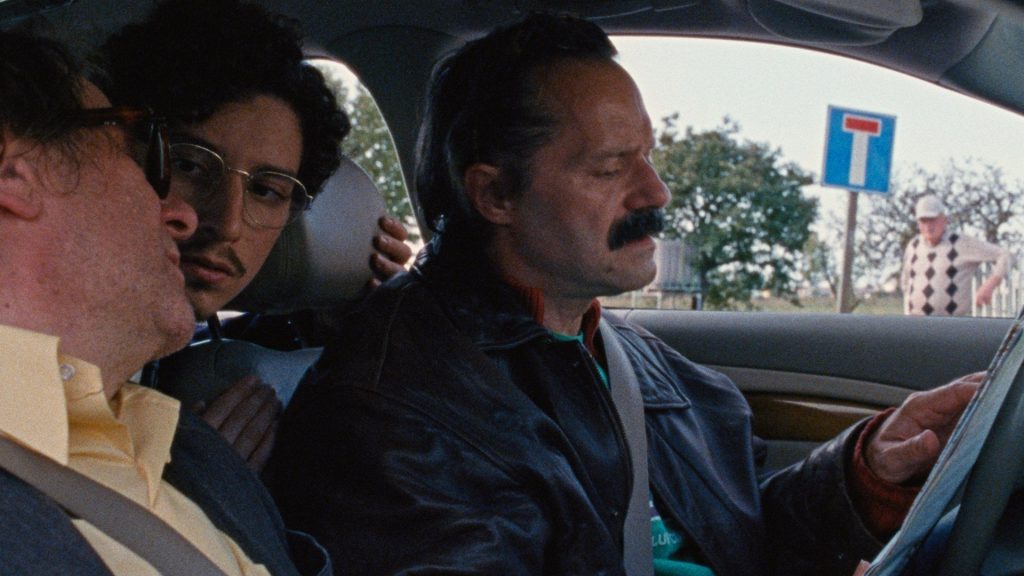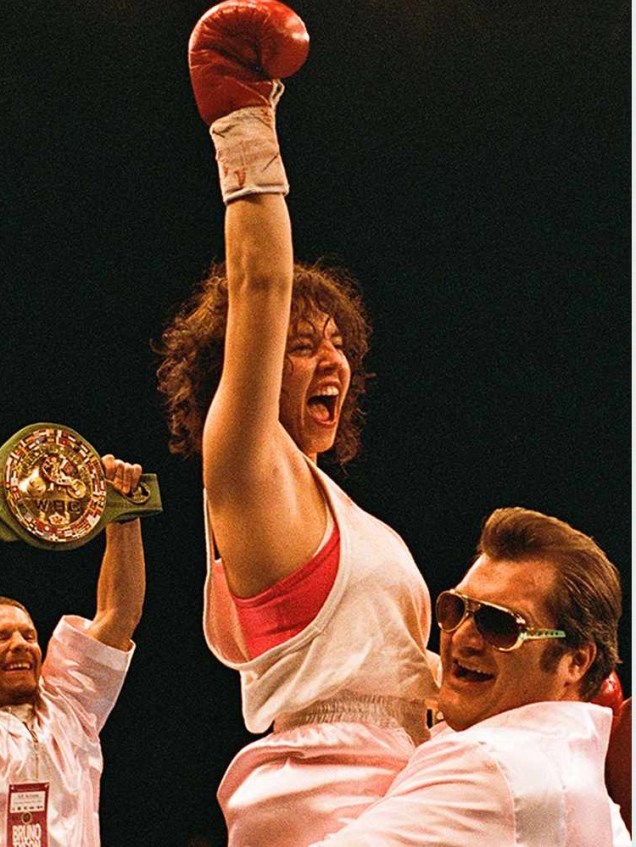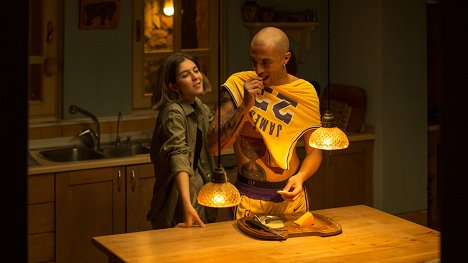Most years, I publish my predictions for the Oscar nominations the day before. This year, I’m able to publish two days before. I’ve been better this year than in previous years in being up to date on who received what accolades. The Golden Globes, Critics Choice, the various film critics circles and the respective Guild awards have been giving their nominees and some have even decided winners. Very good timing especially since the nominations are coming later in the year than expected.
Again this year, I will decide ten predictions for Best Picture nominees, five predictions for the other categories and possible upsetters that I sense could be surprise nominees. Interesting that there is a new category added this year, bringing the total back to twenty-four. The category is Best Casting. For that category, it makes you wonder who the nominees will be ? The top cast? Or the casting director?
So here are my predictions:
BEST PICTURE
- Bugonia
- Frankenstein
- Hamnet
- Jay Kelly
- Marty Supreme
- One Battle After Another
- The Secret Agent
- Sentimental Value
- Sinners
- Train Dreams
BEST DIRECTOR
- Paul Thomas Anderson – One Battle After Another
- Ryan Coogler – Sinners
- Guillermo del Toro – Frankenstein
- Josh Safdie – Marty Supreme
- Chloe Zhao – Hamnet
BEST ACTOR
- Timothee Chalamet – Marty Supreme
- Leonardo di Caprio – One Battle After Another
- Michael B. Jordan – Sinners
- Wagner Moura – The Secret Agent
- Jesse Plemons – Bugonia
BEST ACTRESS
- Jessie Buckley – Hamnet
- Rose Byrne – If I Had Legs I’d Kick You
- Chase Infiniti – One Battle After Another
- Renate Reinsve – Sentimental Value
- Emma Stone – Bugonia
BEST SUPPORTING ACTOR
- Benicio del Toro – One Battle After Another
- Jacob Elordi – Frankenstein
- Delroy Lindo – Sinners
- Paul Mescal – Hamnet
- Stellan Skarsgard – Sentimental Value
BEST SUPPORTING ACTRESS
- Ariana Grande – Wicked: For Good
- Inga Ibsdotter Lilleas – Sentimental Value
- Amy Madigan – Weapons
- Wunmi Mosaku – Sinners
- Teyana Taylor – One Battle After Another
BEST ORIGINAL SCREENPLAY
- Ronald Bronstein & Josh Safdie – Marty Supreme
- Ryan Coogler – Sinners
- Kleber Mendonca Filho – The Secret Agent
- Eva Victor – Sorry, Baby
- Eskil Vogt and Joachim Trier – Sentimental Value
BEST ADAPTED SCREENPLAY
- Paul Thomas Anderson – One Battle After Another
- Clint Bentley and Greg Kwedar – Train Dreams
- Guillermo del Toro – Frankenstein
- Will Tracy – Bugonia
- Chloe Zhao and Maggie O’Farrell – Hamnet
BEST ANIMATED FEATURE
- Arco
- The Bad Guys 2
- Kpop Demon Hunters
- Little Amelie Or The Character Of Rain
- Zootopia 2
BEST CASTING
- Hamnet
- Marty Supreme
- One Battle After Another
- Sinners
- Wicked: For Good
BEST CINEMATOGRAPHY
- Autumn Durald Arkapaw – Sinners
- Michael Bauman – One Battle After Another
- Darius Khondji – Marty Supreme
- Claudio Miranda – F1: The Movie
- Adolpho Veloso – Train Dreams
BEST COSTUME DESIGN
- Miyako Bellizzi – Marty Supreme
- Ruth E. Carter – Sinners
- Kate Hawley – Frankenstein
- Paul Tazewell – Wicked: For Good
- Malgosia Turganska – Hamnet
BEST DOCUMENTARY FEATURE
- 2000 Metres To Andriivka
- Cover-Up
- Mr. Nobody Against Putin
- My Undesirable Friends: Part 1
- The Perfect Neighbor
BEST FILM EDITING
- Ronald Bronstein and Josh Safdie – Marty Supreme
- Affonso Goncalves and Chloe Zhao – Hamnet
- Andy Jurgenson – One Battle After Another
- Stephen Mirrione – F1: The Movie
- Michael P. Shawver – Sinners
BEST INTERNATIONAL FEATURE FILM
- Belen – Argentina
- It Was Just An Accident – France
- The Secret Agent – Brazil
- Sentimental Value – Norway
- Sirat – Spain
BEST MAKEUP and HAIRSTYLING
- Frankenstein
- Marty Supreme
- Sinners
- The Smashing Machine
- Wicked: For Good
BEST ORIGINAL SCORE
- Alexandre Desplat – Frankenstein
- Ludwig Goransson – Sinners
- Jonny Greenwood – One Battle After Another
- Kangding Ray – Sirat
- Max Richter – Hamnet
BEST ORIGINAL SONG
- “Dream As One” – Avatar: Fire and Ash
- “The Girl In The Bubble” – Wicked: For Good
- “Golden” – KPop Demon Hunters
- “I Lied To You” – Sinners
- “No Place Like Home” – Wicked: For Good
BEST PRODUCTION DESIGN
- Frankenstein
- Hamnet
- Marty Supreme
- Sinners
- Wicked: For Good
BEST SOUND
- Avatar: Fire and Ash
- F1: The Movie
- Frankenstein
- One Battle After Another
- Sinners
BEST VISUAL EFFECTS
- Avatar: Fire and Ash
- F1: The Movie
- Frankenstein
- Jurassic World Rebirth
- The Lost Bus
BEST ANIMATED SHORT FILM
- Autokar
- Butterfly (Papillon)
- Eiru
- The Girl Who Cried Pearls
- Snow Bear
BEST DOCUMENTARY SHORT
- All The Empty Rooms
- Armed Only with a Camera
- Classroom 4
- The Devil Is Busy
- We Were The Scenery
BEST LIVE-ACTION SHORT
- Ado
- Beyond Silence
- The Boy with White Skin
- Extremist
- A Friend of Dorothy
Once again, I’ll be giving my predictions for the most likely upsetters. Sometimes these award shows and their nominees will hint as to who will upset the favorites and some may come out of nowhere. So here’s my take:
BEST PICTURE
- F1: The Movie
- It Was Just An Accident
- Wicked: For Good
BEST DIRECTOR
- Jafar Panahi – It Was Just An Accident
- Joachim Trier – Sentimental Value
BEST ACTOR
- Joel Edgerton – Train Dreams
- Ethan Hawke – Blue Moon
BEST ACTRESS
- Kate Hudson – Song Sung Blue
- Tessa Thompson – Hedda
BEST SUPPORTING ACTOR
- Sean Penn – One Battle After Another
- Adam Sandler – Jay Kelly
BEST SUPPORTING ACTRESS
- Odessa A’Zion – Marty Supreme
- Elle Fanning – Sentimental Value
BEST ORIGINAL SCREENPLAY
- Zach Cregger – Weapons
- Jafar Panahi – It Was Just An Accident
BEST ADAPTED SCREENPLAY
- Park Chan-Wook, Lee Kyoung-Mi, Don McKellar and Lee Ja-Hye – No Other Choice
- James Vanderbilt and Jack El-Hai – Nuremberg
BEST ANIMATED FEATURE
- Demon Slayer: The Movie
- Elio
BEST CASTING
- Frankenstein
- Sentimental Value
BEST CINEMATOGRAPHY
- Dan Lautsen – Frankenstein
- Lukasz Zal – Hamnet
BEST COSTUME DESIGN
- Jennifer Johnson – Bugonia
- Lindsay Hugh – Hedda
BEST DOCUMENTARY FEATURE
- Apocalypse In The Tropics
- Seeds
BEST FILM EDITING
- Kirk Baxter – A House Of Dynamite
- Evan Schiff – Frankenstein
BEST INTERNATIONAL FEATURE FILM
- Left-Handed Girl – Taiwan
- No Other Choice – South Korea
BEST MAKEUP and HAIRSTYLING
- One Battle After Another
BEST ORIGINAL SCORE
- Daniel Lopatin – Marty Supreme
- Hans Zimmer – F1: The Movie
BEST ORIGINAL SONG
- “Drive” – F1: The Movie
- “Train Dreams” – Train Dreams
BEST PRODUCTION DESIGN
- Avatar: Fire and Ash
- The Fantastic Four: First Steps
BEST SOUND
- Mission Impossible: The Final Reckoning
- Wicked: For Good
BEST VISUAL EFFECTS
- Sinners
- Superman
And there you go. Those are my predictions for the nominees for the 98th Academy Awards and the possible upsetters to my main predictions. It should make for an interesting morning on Thursday the 22nd. Even with Oscar nominations, nothing is sacred.








